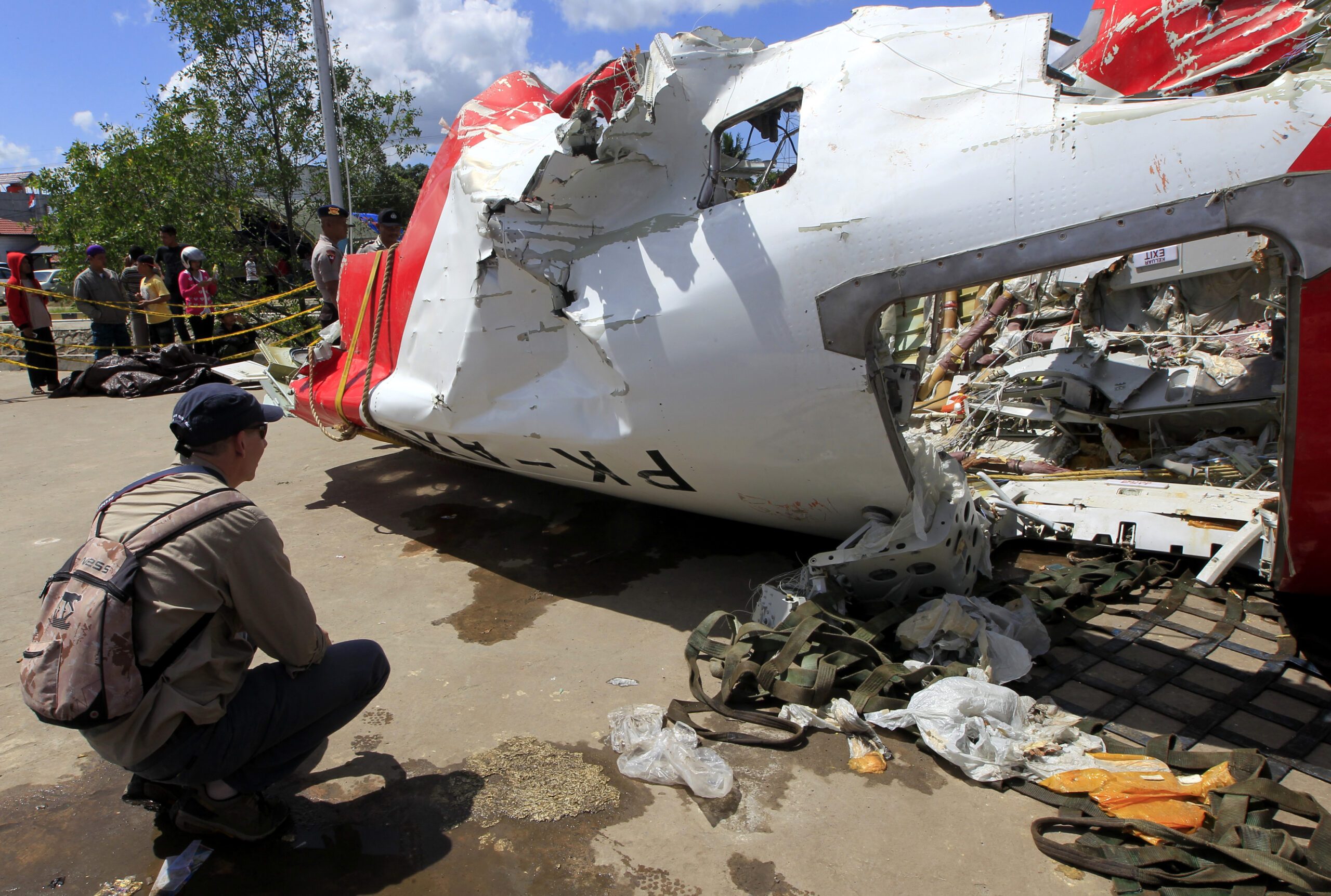SUMMARY
This is AI generated summarization, which may have errors. For context, always refer to the full article.

JAKARTA, Indonesia—Indonesia’s transport ministry Thursday, December 3, began inspecting all Airbus A320s registered in the country after a probe found a faulty component contributed to last year’s crash of an AirAsia plane with the loss of 162 lives.
The Airbus A320-200 plunged into the Java Sea in stormy weather on December 28 last year, during what was supposed to be a routine flight from the Indonesian city of Surabaya to Singapore.
An Indonesian investigation released Tuesday found a fault with a system that helps control the rudder’s movement, poor maintenance, and the crew’s inadequate response when a problem occurred, were contributing factors to the crash of flight QZ8501. (READ: What caused AirAsia crash? Faulty system, crew action)
To prevent similar accidents, the transport ministry said 18 officials would conduct inspections on the 75 Airbus A320s registered in Indonesia – with AirAsia and three other domestic airlines – and expected to conclude the checks on June 2.
“We will check the technical documents, the operation documents, then the plane itself, with a focus on the RTLU (Rudder Travel Limiter Unit),” said Muhamad Alwi, the director of airworthiness at the transport ministry. (READ: Poor pilot emergency training to blame for AirAsia crash: analysts)
The planes can still operate while the checks are being conducted but if any is found to have “repetitive trouble” with the rudder unit, then it will be grounded, said Suprasetyo, the head of the civil aviation directorate general, who like many Indonesians goes by one name. (READ: IN PHOTOS: The search for AirAsia QZ8501)
The probe, by the official National Transportation Safety Committee, showed that cracked soldering in the unit caused it to malfunction and send repeated warning messages to the pilots. (READ: AirAsia boss Tony Fernandes on crash probe: ‘We will not leave any stone unturned’)
In response, they tried to reset a computer system but in the process turned off the plane’s autopilot, and then lost control of the aircraft. (READ: Timeline: What happened to AirAsia QZ8501)
The component had suffered 23 problems in the 12 months prior to crash, with malfunctions occurring more frequently in the final three months, the probe found. —Rappler.com
Add a comment
How does this make you feel?
There are no comments yet. Add your comment to start the conversation.